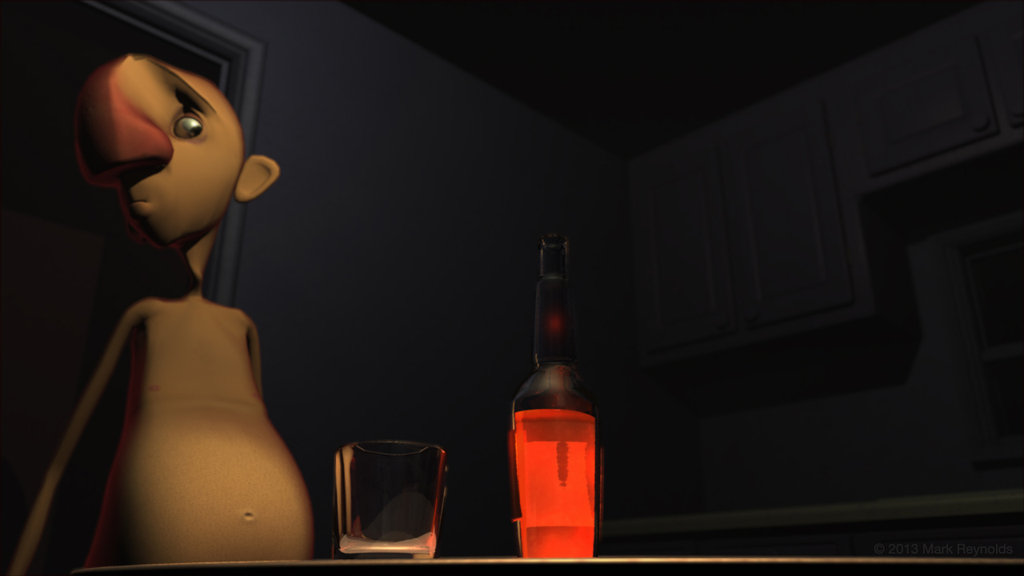
NYFA: What is your personal background and what made you interested in animation?
Mark Reynolds: My Previous Life was one spent dying a little every day in a stiflingly corporate environment and then racing home to apply what little energy had not been sucked from me to teaching myself computer animation.
While I had long been a fan of traditional animation, computer animation had grabbed my attention some time before when I saw Studio AKA’s stunning short, “Jojo in the Stars.”
I spent a few years trying to teach myself CG, and progressed very slowly due to the sheer scope of the undertaking.
One night, after spending seven hours plugged in creating a fairly simple animation, I realized that those had been the happiest seven hours of that week. It was time to resolve the disharmony between day job and night pursuits and plant myself in an immersive environment where I could truly learn CG effectively.
NYFA: You serve as a director of NYC’s SIGGRAPH chapter. Who should join the organization and why?
MR: NYC ACM SIGGRAPH is a great asset to New York’s CG community. SIGGRAPH unites the disparate fields of computer graphics: from the hardcore scientists who work under the hood and emerge with innovative technologies, to the artists who use them.
Local chapter events include various talks, presentations, and screenings. The annual Industry Spotlight allows some of the best and brightest NYC animation houses to give presentations on who they are and what they’re about. MetroCAF is an annual animation festival for regional students. And the monthly Bring Your Own Animation brings artists and aficionados together in a pub with a big TV so they can share their work while sharing a pint.
NYC ACM SIGGRAPH (I’m not shouting – those are acronyms!) offers many chances to meet new people who share your personal and professional interests, and to see new things you might not see elsewhere.
Many of the chapter’s events are open to non-members, as well. But membership gets you free or reduced admission to those events, as well as access to certain talks or site visits that might not be open to non-members of the chapter.
NYFA: What do you think is the most important skill for a professional animation artist to have?
MR: The ability to function without sleep for years, a unique eye, and a good knowledge of your tools.
Much of any computer animation project boils down to problem solving. Does your project need simulation of some sort (cloth, fluids, rigid bodies), or will straight-ahead animation do the trick? Do you even need to model something in 3D, or can you just composite it in 2D without anyone being able to tell the difference? How do I make that hairy banana look even more hairy…but still yellow…and smile?
There will be several ways to do any given task – be able to find one that works using the tools and techniques you know.
NYFA: What made you choose NYFA as your school of choice for your animation studies?
MR: I “did” college many years ago – decent school, decent GPA, decent degree (okay, English Lit, so that last part is up for debate).
Once I decided to return to school to learn computer animation, I originally did investigate going to a four-year school. But so much of the college experience is not one that needs to be relived by a gent in his, ahem, later thirties.
Going to NYFA, I emerged three years sooner and $100K less in debt. So even if I have to spend extra post-school time on my own continuing to beat my showreel into submission, that’s time that, were I in a four-year program, I would not yet be using for my showreel at all!
NYFA: You returned to NYFA as an instructor. How much was your experience as a student a part of that decision?
MR: It was a tremendous part. In department head Robert Appleton I found as much a mentor as a teacher. His love of teaching was infectious.
And I also enjoy helping guide new students to those moments where, all of the sudden, everything clicks; all the tedium and technicalities that are part of the process. And they see the magic, which they themselves created, happening on the screen.
NYFA: Do you find any difference between teaching adults and teaching teenagers?
MR: The teen animation program is essentially a summer camp and is a very charmed environment for working with teens. It doesn’t require an Edward James Olmos-with-a-baseball-bat approach.
So, with teens or adults in these situations, we’re dealing with people eager to learn this art. The main difference between the two would probably be that my own sense of humor is much more in line with a 14-year-old’s than an adult’s.
NYFA: Between being a board member of SIGGRAPH, doing freelance CG animation work, and being a CG animation instructor at NYFA, when do you find time to eat and sleep? Any time management tricks for busy students who are going to turn into busy professionals?
MR: Sleep? What a charming idea.
NYFA: Do you have any parting advice for aspiring animation and visual effects professionals?
MR: Animation, of any kind, is mind-numbingly tedious and mind-meltingly complicated; requiring insane amounts of time, dedication, attention, and love. It truly takes a somewhat damaged person to fall in love with the art of making things move one frame at a time.
That being said, that first moment that wad of pixels, or lump of clay, or scribble of ink comes alive for the first time and dances on the screen is absolute magic and can’t be beat.

